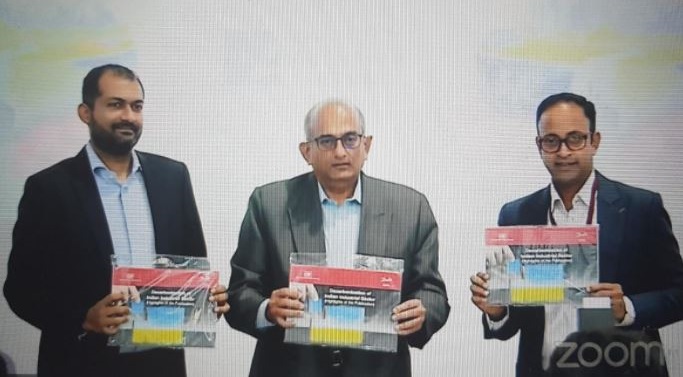Danfoss Industries Pvt Ltd., a leader in energy efficient technologies in its efforts to support India’s roadmap to decarbonisations, in association with CII- Godrej Green Building Council launched a report on “Decarbonisation of Indian Industrial Sector” at MMA Annual Conference 2022, Chennai.
The report shares a snapshot of how the Indian industrial ecosystem currently operates with respect to carbon emissions. The report provides key insights on the methods to reduce carbon emissions, with special focus on key industries such as paper, cement, steel, textiles and chemicals. These pathways if implemented can help drastically reduce emissions helping India meet its sustainability goals.
Ravichandran Purushothaman, President – Danfoss India Region said “As a sustainable organization serving the world’s energy efficiency needs for decades now, we at Danfoss, deeply resonate with India’s strong commitment towards decarbonisations and sustainability. A holistic approach among all organizations in the Indian manufacturing sector to solve the global problem of climate change is the need of the hour. We thank CII GBC for this timely report which showcases the importance of decarbonisation as the main path to India’s sustainability and Energy efficiency being the first fuel for us in this journey. Together, let us ensure a green and sustainable tomorrow for India.”
India has not only made a strong commitment towards decarbonisations but has made significant strides in the right direction. With a lofty goal of achieving net zero by 2070, India and the industrial sector would need to employ these path breaking techniques to help further mitigate greenhouse gas emissions. The report also indicates that just by voluntary action by industrial players can reduce greenhouse gas emissions by close to 5.6% underlining the importance of these guidelines.
Findings of the report indicate that through current available technologies and energy efficiency measures, Industries can double the reduction of CO2 emissions from current levels in the next 15 to 20 years. Newer technologies such as CCUS, H2 will find larger off take after 2035 onwards within industries. Hence, Energy Efficiency adoption will play a huge role in India’s decarbonisation journey, contributing nearly 40% of the overall industrial emission reduction.
At the COP26 summit, India was one of the many countries which supported the move towards clean technologies and building a blueprint for industries and the nation to help achieve larger Climate goals. In light of making the country’s carbon neutrality commitment come true, Danfoss with CII – Godrej GBC looked at some of the best possible techniques to reduce emission through low carbon levers. By tapping into low carbon choices such as energy efficiency, electrification, renewable energy, biomass, circularity & material conservation, zero carbon fuel utilization, hydrogen and CCUS among the many others, Danfoss has dedicated its innovation efforts to pave the way for a decarbonized India.

Kiran Ananth, Principal Counsellor, CII said “India is a country of immense opportunities where decarbonisations can be achieved in more ways than one. Energy Efficiency, among the various options available, emerges as the biggest lever for decarbonisations. It is imperative that India’s Panchamrit commitment at COP26 holds grounds and a concentrated effort towards the same through rigorous scientific backing and development also helps boost our economy and jobs markets. Energy efficiency and decarbonisations therefore leads to a win-win situation where the trifecta of development of People, Planet and Profits can be achieved. We are happy to have partnered with Danfoss to conduct this research report on decarbonisation of Indian industries, which we believe can shine the light on the way forward for India’s sustainability journey.”
